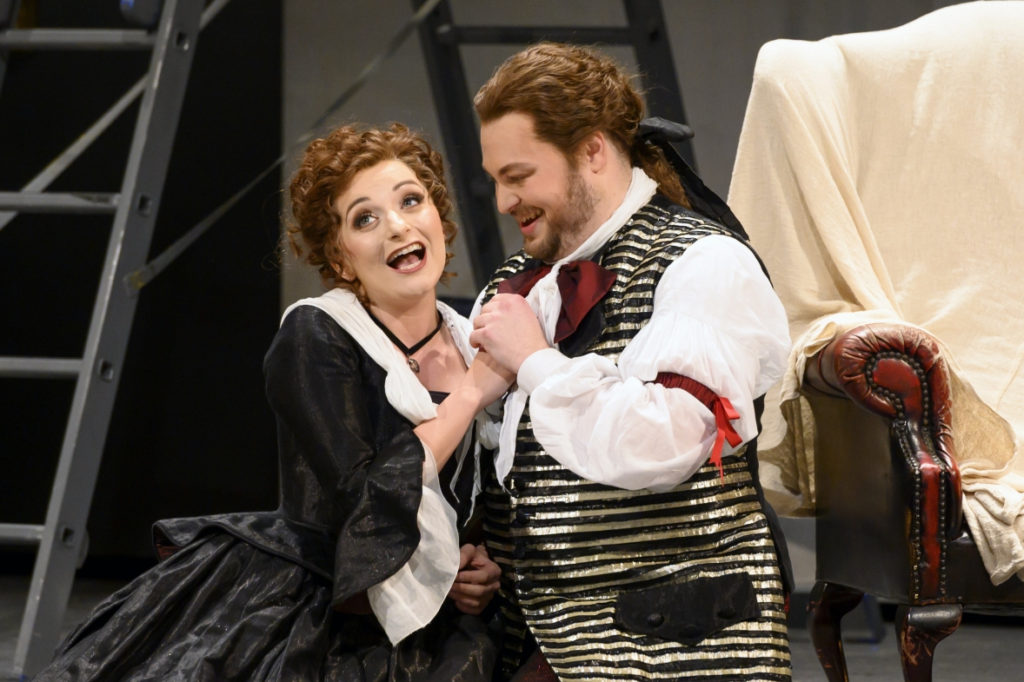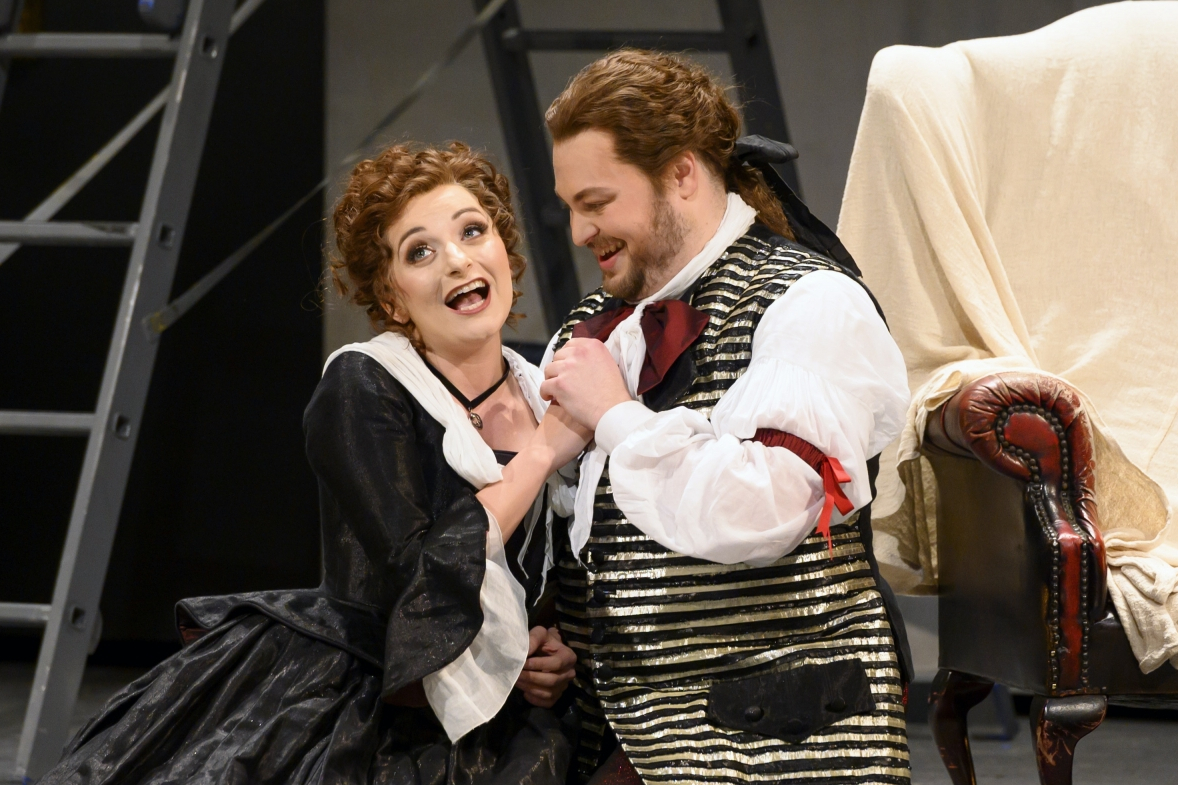
I have heard it said that we seem to be living through a version of ‘The End of Days’. As if four years of Brexit hell haven’t been enough, now we are starting to think twice about leaving the safety of our own homes for fear the stalking Covid-19 virus lies in wait for us.
But, despite trepidation no doubt on the part of some, several hundred souls still thronged to see this most popular of operas at the Hippodrome. If, over the next few weeks many of us are forced to impose voluntary self-incarceration, we can at least look back and savour the memory of a sparkling performance by the Welsh National Opera on top form. This was a Marriage to celebrate.
What was not to like? Bright and beautifully delivered performances from the entire company were given a fulcrum by the scintillating Soraya Mafi as the cheeky, irrepressible Countess’s maid, Susanna alongside the deliciously warm bass tones of David Ireland as Figaro. Mafi got the biggest laugh of the night when she arrived to accompany Cherubino on the guitar, only to ‘realise’ that the orchestra was doing it anyway. It was a nice touch and typical of director Max Hoehn’s witty approach.
Susanna and Figaro’s was but one of several successful couplings of the night. Jonathan McGovern did an excellent job, veering from avenging Count to grovelling husband alongside the equally brilliant Anita Watson as the aggrieved Countess Rosina Almaviva. Her beseeching aria Porgi, amor, qualche ristoro (Grant, love, some comfort) soared into the great circular roof above us like some divine bird.
There was much fun to be had at the hands of the impossibly eyebrowed Henry Waddington as Doctor Bartolo and his housekeeper Marcellina, sung by Leah-Marian Jones. Her cat fight with Susanna for the hand of Figaro had palpable venom. And there was sweet perfection in the pairing of Anna Harvey as the womanising young captain Cherubino and Harriet Eyley as Barbarina, whose opening aria at the start of Act IV, L’ho perduta, me meschina (I have lost it, poor me) was just another of many highlights of the night. Laurence Cole was good value as the clog-wearing gardener to the Count, while Richard Roberts grabbed our attention with his shock of vertical hair and wonderful pink specs as Don Curzio, the judge.
There was an irresistible chemistry between the cast members as they pulsed their way through the dancing lines of Mozart’s score, and there was extraordinary zest to their performances – a delight to watch and listen to from beginning to end.
Set designer Ralph Koltai’s (1924-2018) set provided bold swivelling slabs of colour and mirroring that incised the stage area. Memorably, before the wedding celebrations, there is a moment where the stage is bare save for a line of bentwood chairs in silhouette across a backlit ‘sky’ of graded light. Less can be more.
Conductor Carlo Rizzi rightly took much acclaim at the end for a lively performance by the WNO orchestra. He and the entire entourage were sending us all home with lightened hearts. Mozart’s Marriage of Figaro, part multiple-layered love story and coloured by levels of privilege, power and morality is given a lighter side by its occasional descent into farce and fun. Maybe it is that we’re missing most just now. ★★★★★ Simon Bishop 13th March 2020
Photo Credit Richard Hubert Smith


